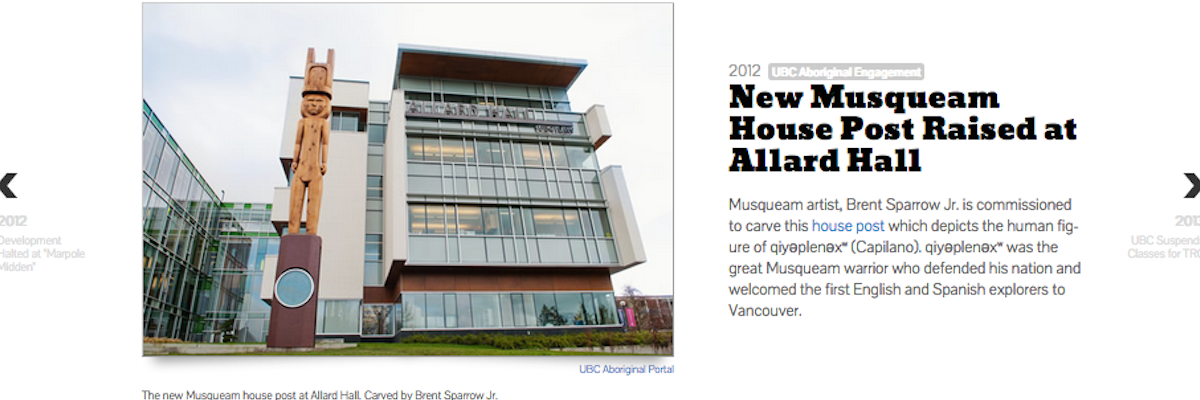The second in a series of blog posts by student project assistant Mathew Andreatta introducing and reflecting on different aspects of his work as he co-develops the Educator’s Guide for the Musqueam row of the Time and Place at UBC: Our Histories and Relations timeline.
Read Mat’s previous blog post, “Responsible Receiving.”
Work on the CTLT Time and Place at UBC: Our Histories and Relations project continues this semester. We are looking forward to the upcoming, rescheduled session on March 7th that will allow us to discuss the project with community members here at UBC and CTLT.
On the continuing work for the timeline project, I’m excited to inform you of a new task I have been undertaking to highlight historical and contemporary events that speak to the relationship between the Musqueam Nation and UBC. This process is part of the creation of a filtering function, which will allow users to filter the events on the digital timeline by topic. “Musqueam-UBC relations” is one of the topics that is currently under development. The incorporation of this topic filter is meant to highlight the historical roots of these relationships that extend through the years and continue to grow and affect the connections between UBC and Musqueam today.
This task involves a deeper look at the events of the timeline, forming understandings of how they weave together to form narratives that help to show us why these histories matter, why they should be taught and thus why well-informed gestures such as land acknowledgements matter here at UBC and elsewhere. Forming these types of narratives is a challenging undertaking: it involves examining the events, what led up to them, and their short-term and long-term effects. This must be done in a fashion that does not necessarily follow the linear nature of the timeline as these events connect in many different ways across the years. This approach is meant to ensure that an understanding of these histories is not based in seeing these events as static moments in history, but instead as significant examples of connection that reach forwards on the timeline and continue to affect Musqueam’s relationship with UBC and the territories on which it sits.
Through this approach, I have been noticing many interesting dynamics and transformations in UBC and Musqueam’s relationship throughout the years. While the relationship has foundations in colonial ideologies as well as practices of land dispossession which continue to generate many problems for both parties, I find it interesting to see UBC taking part in moments of resistance to oppressive colonial rule alongside Indigenous peoples. For example, in 1927, the Indian Act was amended in order to make it illegal for Indigenous folks to hire legal council and gather to discuss land claims. However, in the same year, Musqueam sold c̓səmlenəxʷ and qiyəplenəxʷ house posts to UBC. These posts served as stark reminders and assertions of Musqueam presence here on these lands and the university’s relationship and responsibilities to Musqueam. UBC’s acceptance of these house posts by Musqueam signifies an acceptance of these assertions and responsibilities, even amidst a context of colonial rule meant to silence such claims.
I am very excited about this task and the responsibilities this approach is holding up. While it may be daunting at times, it is nevertheless important work that must take place to help UBC’s relationship with Musqueam become more meaningful and based in a foundation of mutual understanding.
I look forward to discussing this work with you on March 7th!
